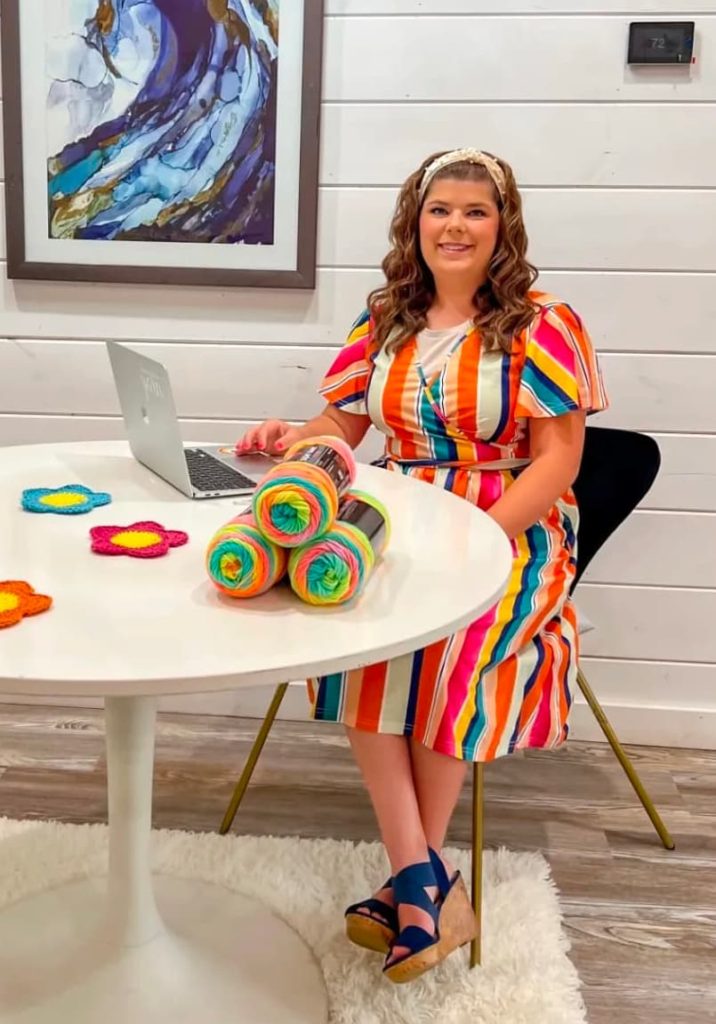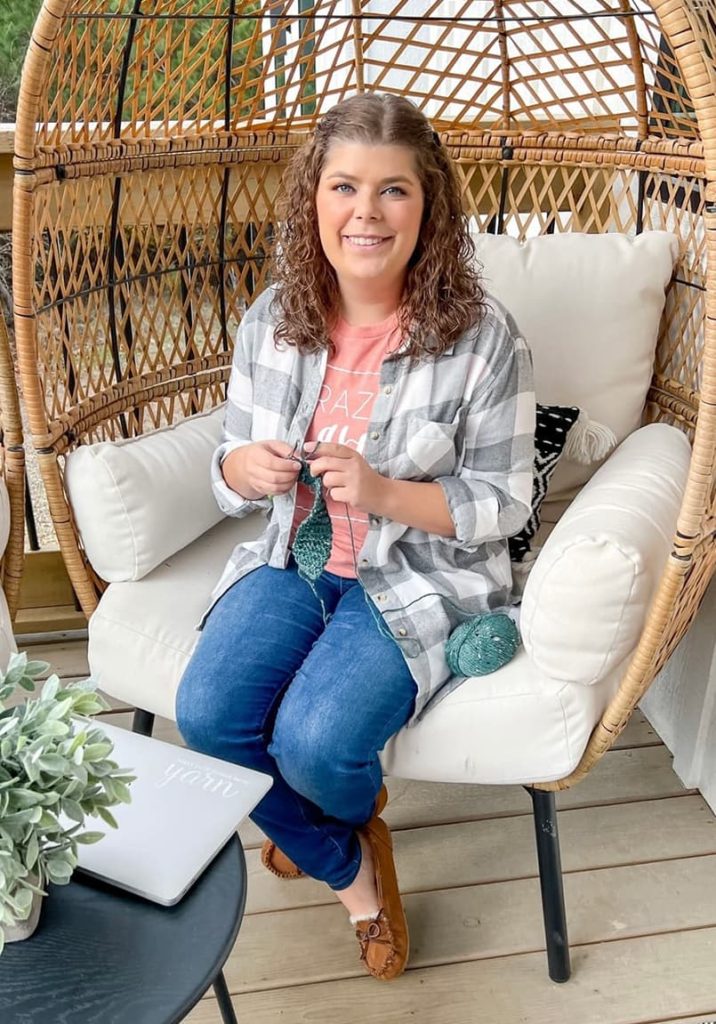This post may contain affiliate links. I may earn a small commission off of at NO extra cost to you. For more info, view my Privacy Policy.
Have you ever been working on a crochet project and come to a part that says to crochet in the back loop of the stitch or to crochet in the front loop only of a stitch? Were you confused wondering what the difference was between the front loop or the back loop? Then this post is for you!
I will be going over exactly how to crochet into each loop of a crochet stitch. This crochet technique has its own purpose and it can be very helpful to learn the different loops of a crochet stitch. Scroll on down to learn the difference!

This is such an easy concept that even a crochet beginner can grasp it. It’s such a useful technique to learn!
Abbreviations for Back Loop Only and Front Loop Only
I’ll start with how these terms are often abbreviated in crochet patterns because this is probably brought you here in the first place, wondering what they meant!
In a pattern you will often see back loop only abbreviated like this
- BLO = work stitches into the back loop only
And front loop only abbreviated like this
- FLO = work stitches into the front loop only
I do want to say that whether it’s a single crochet, half double crochet, double crochet stitches, no matter the stitch, you can apply this technique to them all!
So, a back loop single crochet stitch will be abbreviated like this – BLSC or a front loop double crochet will be abbreviated like this – FLDC
What Are BLO and FLO Used for?
Before I show you the difference between the front loop and back loop of a stitch, I thought I’d share some of the reasons to use them and some of the different effects that they can give to your crochet project.
Reasons to Crochet in the Back Loop Only
- Ribbing – you use back loop single crochet a lot of times to create the ribbing of hats, sleeve cuffs, sweater edgings and things like that.
- Texture – If you wanting to add a little ridge or a bit of texture to a section of one of the crochet projects that you are working one, then crocheting in the back loop can achieve that.
- Structure and Support – The ridges created by working in the back loop can add stability and structure to the crochet fabric. This can be useful when creating items like bags, baskets, or other projects that require a sturdier construction, especially around the bottom of the piece.
- Elasticity – When you work in the back loop, the loops that remain untouched (front loops) create a slight looseness or stretchiness in the fabric. This can be advantageous for projects where a bit of elasticity is desired, such as hats, cuffs, or garments.
Reasons to Crochet in the Front Loop Only
- Dimension and Depth – Working in the front loop can add dimension and depth to your crochet project. By manipulating the front loops, you can create layers or overlapping effects, giving your work a three-dimensional quality and different look.
- Stitch Definition – Working in the front loop can enhance the visibility and definition of individual stitches. This is especially helpful when working with intricate stitch patterns or when you want to showcase the specific characteristics of a particular stitch.
- Textured Fabric – By consistently working in the front loop, you can create a textured fabric with a unique surface appearance. This can be desirable for certain projects where you want to add visual interest or a tactile element to the finished piece.
It’s also worth noting that using the front loop exclusively may result in a fabric that is less stretchy compared to working in both loops or the back loop. Therefore, it’s important to consider the characteristics and requirements of your project when deciding to use the front loop.
I also have a video tutorial on my YouTube Channel explaining the difference and showing exactly where to insert your crochet hook into whichever loop you are trying to crochet into. Or, scroll on down for the tutorial photos
How to Crochet into the Back Loop Only (BLO)
When you typically crochet, whether it is a single crochet or a double crochet, you will insert your hook under both loops of the stitch (it kinda looks like a v if you are looking directly down at the top of the stitches). Like this –

- Back Loop (BL): The back loop is the loop that is farthest away from you when you’re looking at the top of the stitch. It is the loop that faces towards the back of your work. When you work into the back loop only, you are inserting your hook under the back loop and leaving the front loop untouched.
To crochet in the back loop only, you will insert your hook only into the loop farthest from you. Like this –

then complete your stitch as normal, depending on what stitch you are crocheting. The front loop of a stitch will remain unworked, continue in a like manner in the next stitch.
Here is an example of what crochet ribbing looks like when using only single crochet stitches and working in the BLO stitches –

How to Crochet into the Front Loop Only (FLO)
- Front Loop (FL): The front loop is the loop that is closest to you when you’re looking at the top of the stitch. It is the loop that faces towards the front of your work. When you work into the front loop only, you are inserting your hook under the front loop and leaving the back loop untouched.
To crochet in the front loop only, you will insert hook only into the loop closest to you, the one in the front. Like this –

then complete your stitch as normal, depending on what stitch you are crocheting. The back loop remains unworked and continue in a like manner in the next stitch.
And that’s how easy it is to crochet in either the front or back loop of a crochet stitch!
I hope that you have enjoyed this post for learning the difference between the back loops of a stitch and the front loops of a stitch.
Here are some patterns that you might enjoy!











Did you love this craft?
Make sure to comment below so we can chat about it! Or follow on your favorite social network for even more patterns and tutorials.